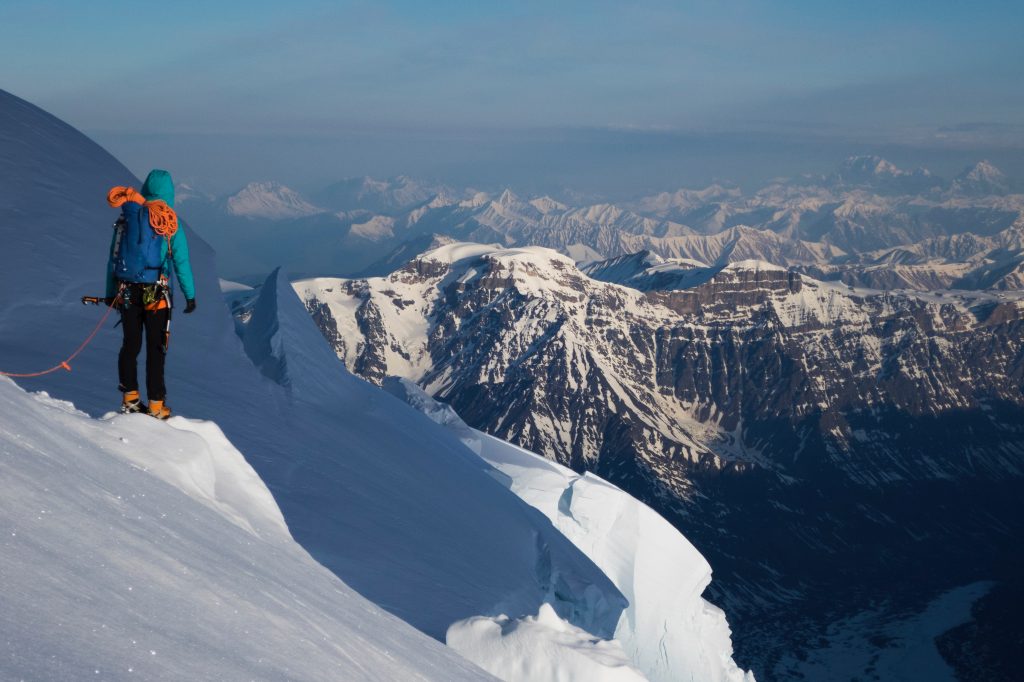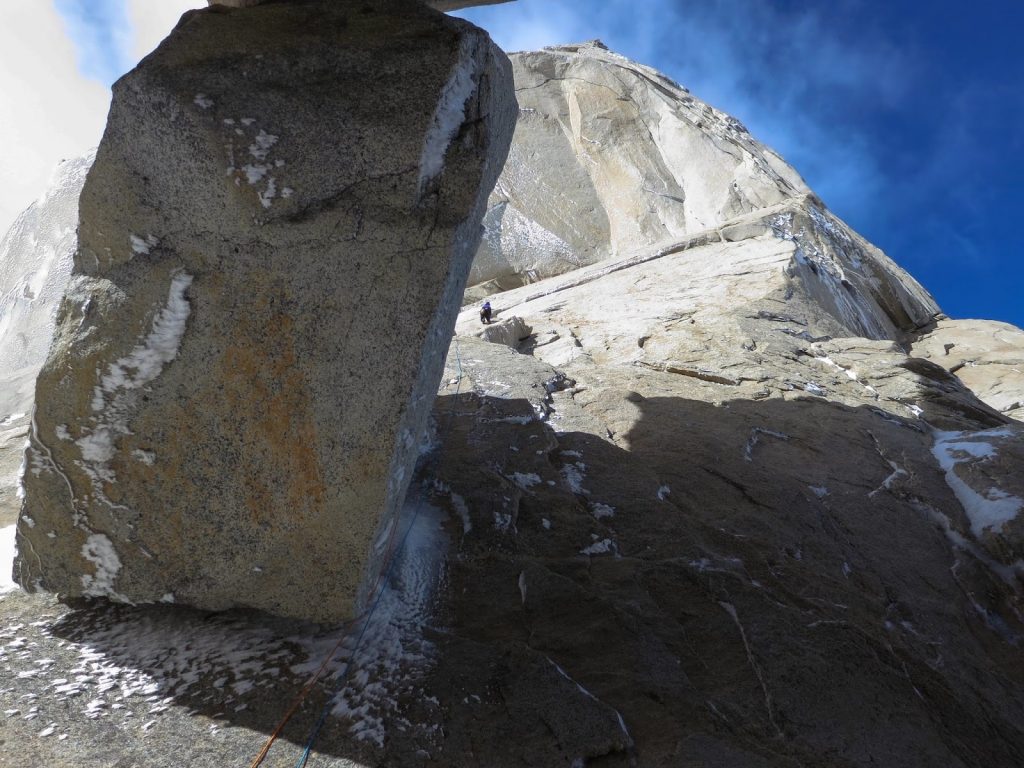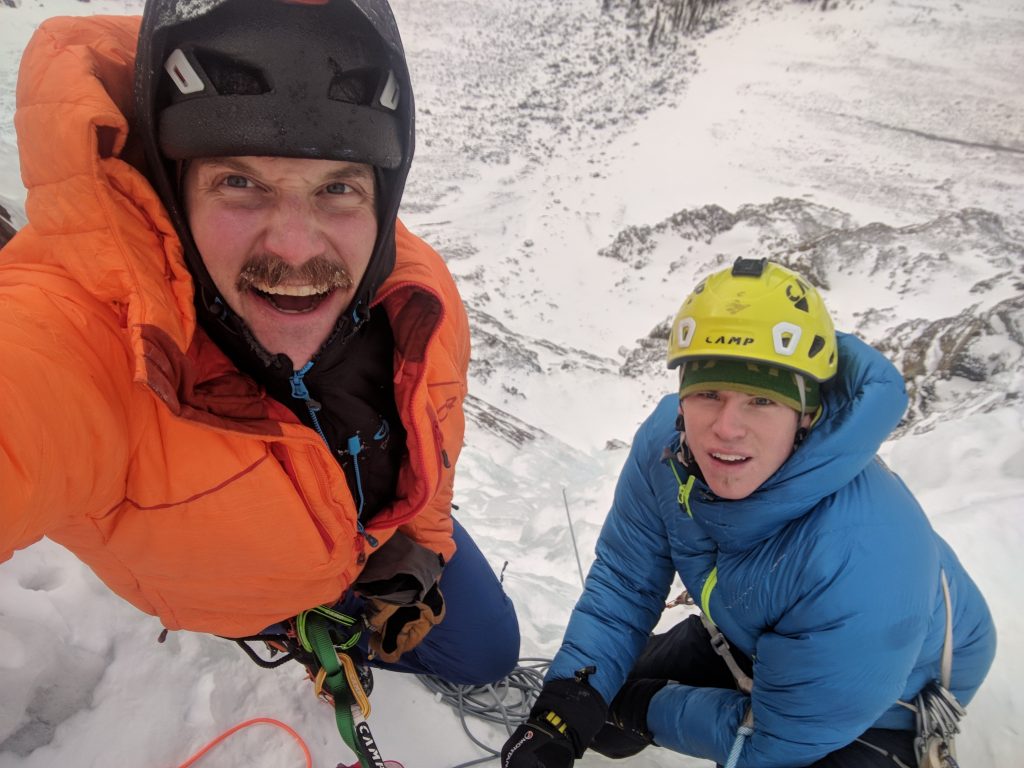
Graham Zimmerman is what you might call an outdoorsy multi-hyphenate. He’s an award-winning alpinist with a history of first ascents, an experienced producer and project manager, and as you might have guessed, an adventure filmmaker.
Oh, and a geophysicist.
“Producing films and producing geology projects is kind of the same thing,” he laughs. “Everybody’s got to be fed, everybody’s got to have a place to sleep, and everybody has to do their jobs.”
Zimmerman, who is the co-founder of Bedrock Film Works with Jim Aikman, has always approached life with a certain zest. He was born in New Zealand and spent his early years there, bouncing from adventure to adventure with his folks, who carried that exploratory spirit along after moving the family to Seattle when he was four-and-a-half. As a child, Zimmerman had a thing for paleontology, but an even bigger thing for the mountains, where he soon discovered the twin joys of skiing and snowboarding.
Eventually, Zimmerman also discovered climbing thanks to his high school’s adventure club; a trip up Mt. Adams (complete with a snowboard descent) with his dad only further fanned the alpine flames. Hoping to somewhat cure him of what was becoming a serious habit, Zimmerman’s parents signed him up for an American Alpine Institute (AAI) course. Naturally, it had the opposite effect—the kid was hooked.
After returning to New Zealand for college and subsequently receiving a different kind of education in its steep and snowbound Southern Alps, Zimmerman came back to the States with a thirst for what he calls “exploratory alpinism.” He linked up with his old AAI instructor, Mark Allen, and they ventured into Denali National Park’s Ruth Gorge to put up a new route, Vitalogy, on the southeast buttress of Mount Bradley. During the course of that trip, Zimmerman shot what would become his first climbing movie on a low-budget flip camera. The trip was also Zimmerman’s first time working with sponsors—and those sponsors shared his film.
“It was a pretty big breakthrough for me in a lot of ways,” Zimmerman says of the whole experience. He began trading off months-long geology projects with increasingly involved climbing expeditions, documenting the latter along the way as a means to inspire others. “I love doing this stuff,” he says. “But if it’s something that I fully keep to myself, then it’s kind of a wasted resource.”

Eventually, Zimmerman began to lean more deeply into alpinism and away from geology. At the same time, he wished for the opportunity to dig further into his creative side—and he wanted a bit more stability. “I had found this woman I was crazy about and I wanted to be around so she wouldn’t dump me,” he laughs.
Sensing the potential for using his creative output to positively affect the outdoor community, he linked up with Aikman to launch Bedrock Film Works. It’s a new twist on work-play balance for Zimmerman, but he’s grateful for the experience. “I get to be home a lot more, I get to work on creative stuff that has a really positive influence on the community. I’m not out in the developing world trying to find uranium and stuff like that—I’m making movies to inspire people and teach people.”
Lacking a formal film school education, Zimmerman has learned a lot from Aikman since the company’s inception—but his own mountaineering experience with technical terrain and rigging allows him to bring his own expertise and history into their work. It served him well during the “pretty unreal” experience of hanging off Yosemite’s El Capitan, shooting Alex Wildman and Conrad Anker for their documentary Hold Fast.
But equally important to Zimmerman is his ability to use both his climbing expertise and his filmmaking experience to help others find their own connection to the outdoors, whether that involves climbing, as with an upcoming skills series they’re shooting in conjunction with Alpine Mentors—or more indirectly, like his advocacy work on behalf of Protect Our Winters. “I’ve dabbled in a number of creative pursuits, and I think it really comes down to positive influence,” says Zimmerman. “Utilizing stories and utilizing characters to share ideas, to share insights, to share excitement, to share inspiration—and to try to make our world a better place.”
Below, Zimmerman shares his thoughts on storytelling, commercial work, and more.

The power of storytelling
I think that storytelling is an art unto itself, and I think it’s a skill unto itself, and I think it needs to be treated as such. A film is made of all its parts. Dealing with rigging is one of them. Running a camera and making sure that you have your exposure correct is another one of them. And understanding storytelling and story structure is a really important part of it, and it should not be overlooked. It’s one of those things that made The Dawn Wall a really, really great movie; it was not only a super amazing climbing movie about really amazing climbing, but it was also a really great story.
The benefits of doing commercial work
A lot of the commercial work we do is in the outdoor industry. Selling sleeping bags? Definitely commercial. But I think there’s this really intrinsic value to the outdoor industry where realistically, our goal is to get people outside. We’re not selling jackets so that we can wear them inside; we’re selling jackets so that people can go have adventures. It’s something I really love about our industry. I think that for me, it’s not only the content we create, but the community that we have in this industry that I really appreciate and enjoy.
Lessons learned from adventure filmmaking
Plan well, be patient, make sure everybody’s fed. For me, climbing is an analog for filmmaking in a lot of ways. When you’re on a new route, you’ve got to deal with each pitch as it shows up and you’re never really quite sure what the whole route’s going to look like until you’re finished, and filmmaking’s the same way. You should go into any shoot or any film with a plan, for sure—you have to, otherwise you’ll blow it—but sometimes that plan or parts of that plan end up getting tossed to the wind and that’s okay. I think that being patient and remaining flexible is really important.
Key advice for shooting adventure sports
You just gotta remember you’re in the outdoors. You’ve got to remember that even though you’re behind the camera, even though you’re creating something, you’re still out there. You still need to be fit, you still need to drink water and eat and sleep—all that stuff matters, maybe even more than it would otherwise.
From a production standpoint, shit goes wrong – you need to have insurance. You want to have your permits in place, and all those kinds of things. I think that it’s pretty easy for people to fly by the seat of their pants with all those things, but I think you’ve got to really pay attention. When you are a filmmaker on an adventure, you are subject to all of the adventurous parts of that adventure, and you’ve got to be prepared.
